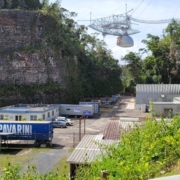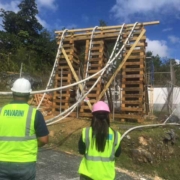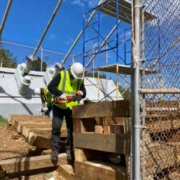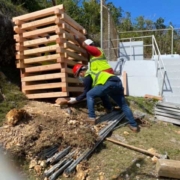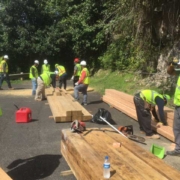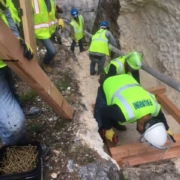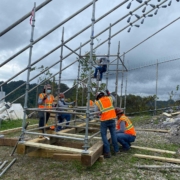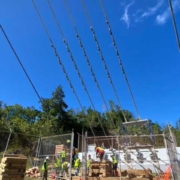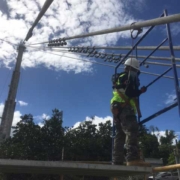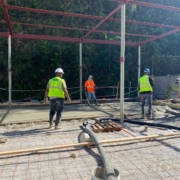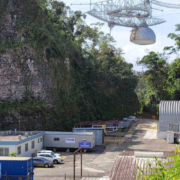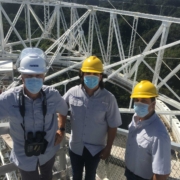Arecibo Observatory
/in Safety /by PAVARINIArecibo Observatory
Client: University of Central Florida
Service Offered: Design Assist for the Means and Methods to Stabilize Cable Structure
Project Location: Arecibo, PR
Year Completed: 2020
The Arecibo Observatory (AO) was the World’s Largest Functioning Radio Telescope. It was originally designed by Cornell University and was constructed by the Department of Defense in 1963. The AO facility is operated by the National Science Foundation. The functions of the Arecibo Observatory included scientific experiments, observations, listening for extraterrestrial life, World Defense System (tracking near-Earth objects that could potentially collide with Earth).
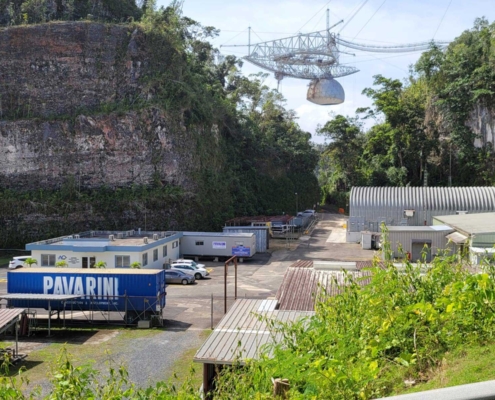
The AO structure was composed of three concrete towers 275 to 400 feet tall, from which multiple Steel cables suspended a 900-ton platform over a 1,000-foot diameter reflector dish. The platform suspended antennae and a Gregorian Dome that contained transmitters and receivers used to send and receive radio waves for observations and experiments. The cables ranged in size up to 3-1/2” diameter and over 700 feet long, some weighing 12 tons each.
In August 2020 PCD was contacted by the Arecibo Observatory to prepare a proposal to replace one of the original cables supporting the telescope platform. Days before submitting the proposal, and without warning, a separate cable released from its socket.
PCD was immediately contracted on an emergency basis to perform design-assist services for the study of alternative means and methods to replace cables and to install structural bypass systems at other socket locations that were at risk of releasing. PCD’s contract was soon expanded to include the fabrication of selected permanent and temporary cables.
Fabritec Structures of Texas and the Pfeifer Group of Germany worked under subcontract to PCD for the engineering and fabrication of these cables and friction clamp bypass systems. While the fabrication of cables proceeded in Germany, the structural engineers and the AO continued to monitor the remaining cables.
Pavarini Construction & Development, LLC participated with the project team that included the National Science Foundation, NASA, the University of Central Florida, various structural engineering firms, Fabritec Structures, and the Pfeifer Group to study concepts to reduce the tensile loads on the structure and multiple concepts for cable replacement. During this period, a second cable unexpectedly failed at which time PCD’s services were again expanded to include the construction of heavy cribbing and safety measures intended to protect workers during the anticipated installation of the structural bypass systems and cable replacement.
Unfortunately, the structure continued to rapidly deteriorate, and it was determined to be too unsafe to permit work to continue. On December 1, 2020, the structure collapsed to the great disappointment of the entire team. Once again, the PCD role was revised to include site zone security, environment assessment, environmental testing, and hazardous material management. The CSA Group and Central Industrial Services worked under subcontract to PCD for these services.

